Optogenetic Cybernetic Translations
In the series, Optogenetic Cybernetic Translations, I am investigating the artist and scientist as translators of data that illuminate the connections existing in the broader world. My collaborator, scientist Mike Avery, is researching optogenetics, a technique that involves the use of light to manipulate neurons in the brain. I used images from his lab: histological brain sections, stained with immunohistochemical markers, and imaged using confocal microscopy. I then explored how artificial intelligence might interpret these brain scans, creating metaphors for what the future might hold as technology infiltrates our fields.
I used computer vision software, which is a technology concerned with the automatic interpretation, analysis and understanding of information from a single image, to interpret the brain scans. The results of this interpretation included an aurora, fireflies, bioluminescence, rust or texture, light, and military night vision. I paired each brain scan with its corresponding AI translation, resulting in interesting metaphors between cognition and a world full of beautiful, or potentially frightening, phenomenon. By allowing our collaborative work to be interpreted by a third party we are embracing the fact that our work is larger than ourselves and never wholly in our control.
Optogenetic Cybernetic Translations
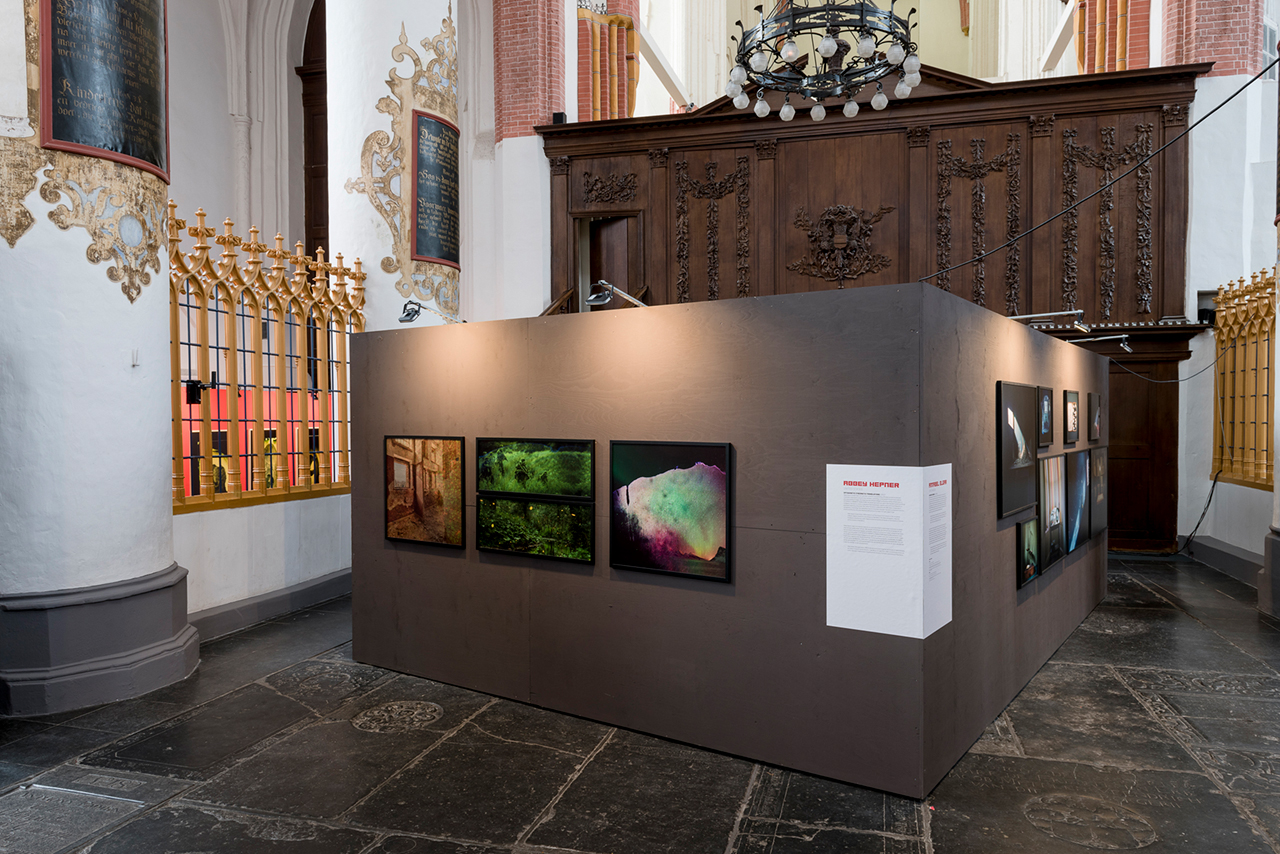
Noorderlicht Photo Festival, Groningen, Netherlands, 2017
Installation photo courtesy of Noorderlicht Photo Festival, www.noorderlicht.com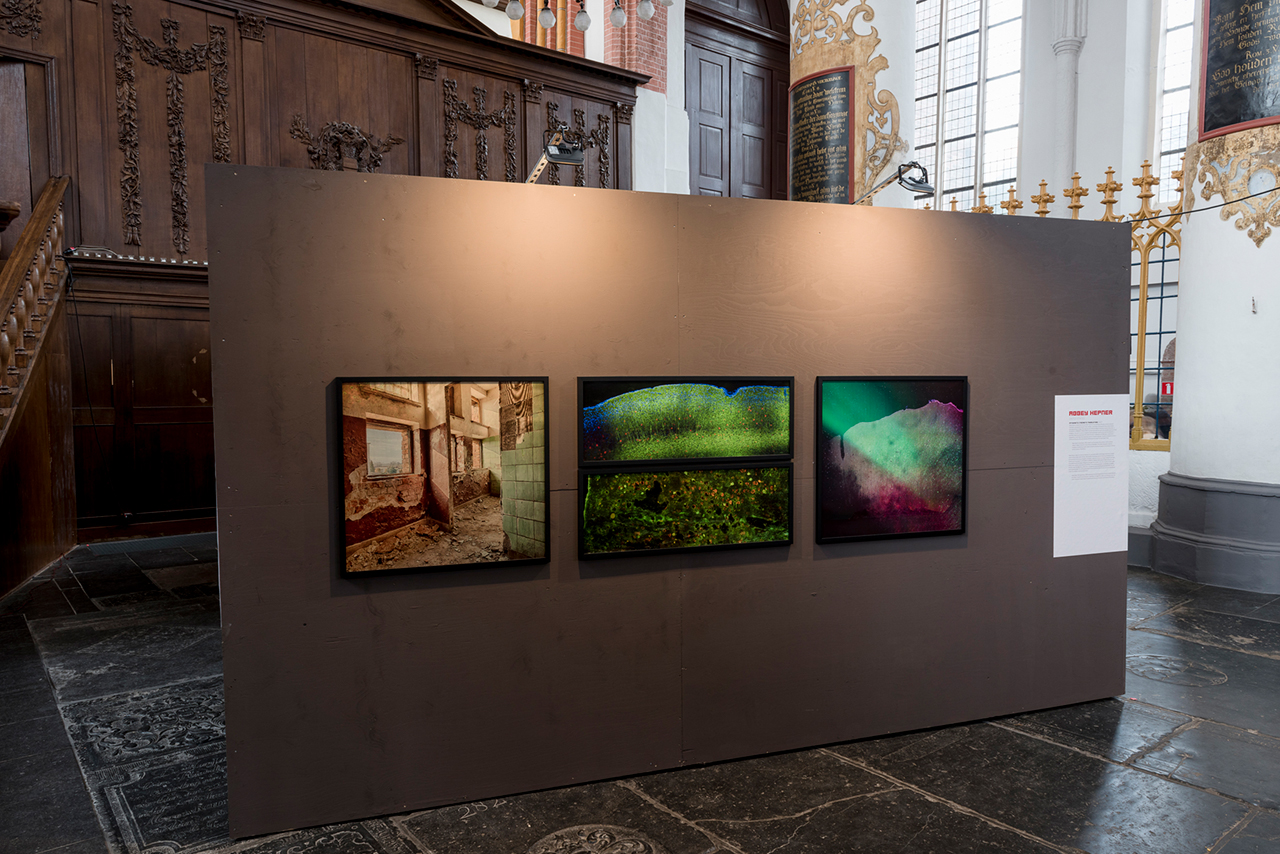
Noorderlicht Photo Festival, Groningen, Netherlands, 2017
Installation photo courtesy of Noorderlicht Photo Festival, www.noorderlicht.comSan Diego Art Institute Installation viewer video walk by, 2017
Four lenticular prints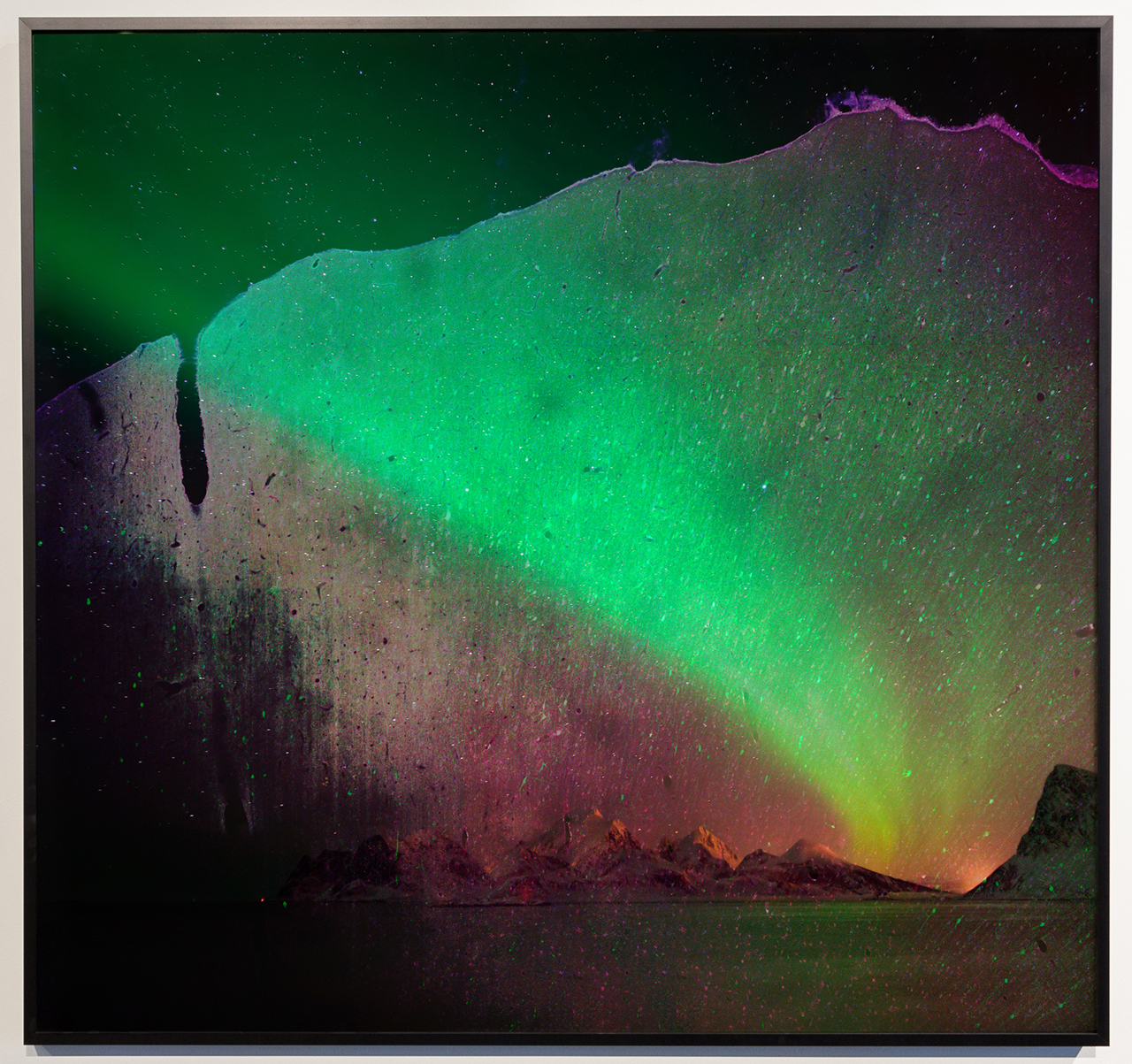
Atmosphere
36"x34", Computer Vision Translated Lenticular Print, 2017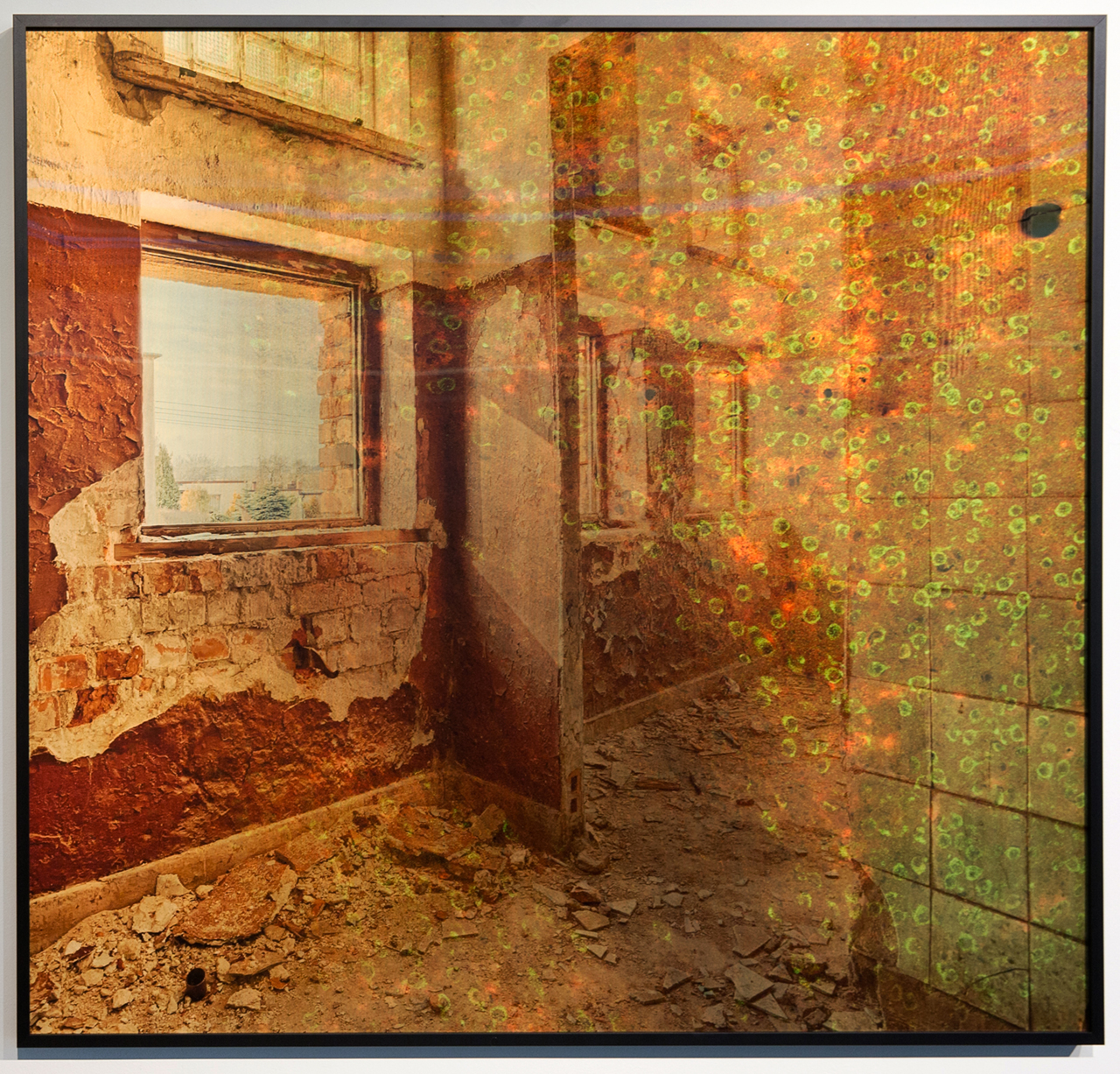
Rust
36"x34", Computer Vision Translated Lenticular Print, 2017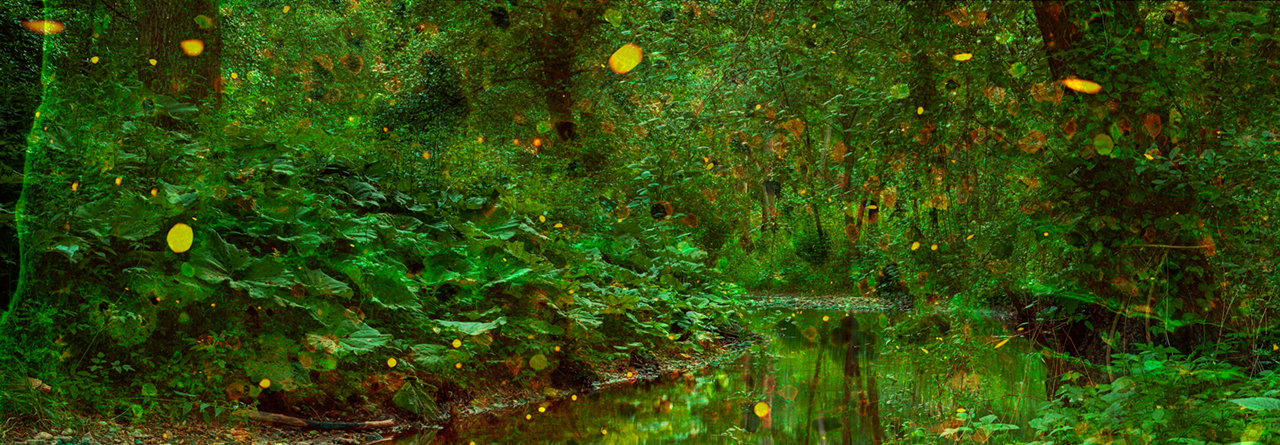
Fireflies
46"x16", Computer Vision Translated Lenticular Print, 2017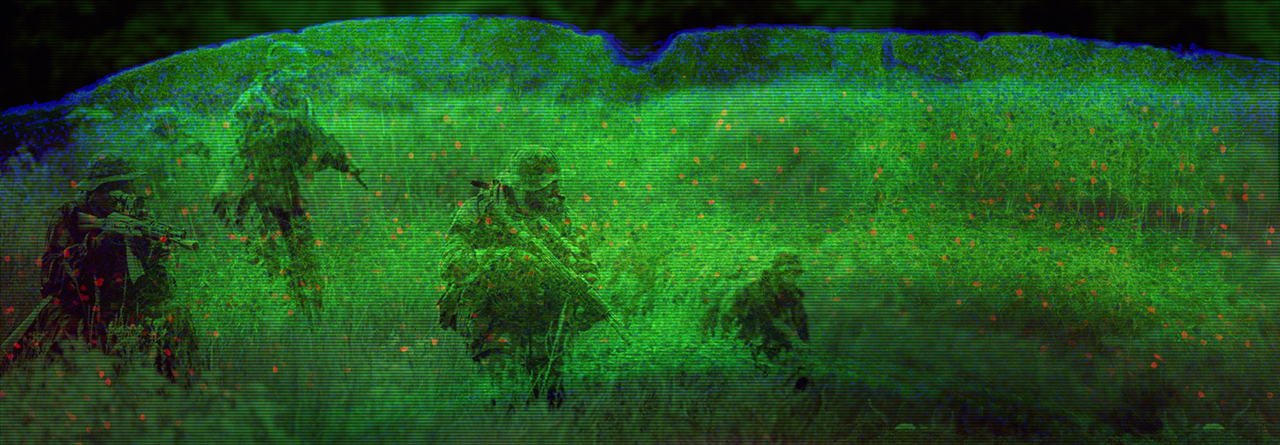
Military Night Vision
46"x16", Computer Vision Translated Lenticular Print, 2017In the series, Optogenetic Cybernetic Translations, I am investigating the artist and scientist as translators of data that illuminate the connections existing in the broader world. My collaborator, scientist Mike Avery, is researching optogenetics, a technique that involves the use of light to manipulate neurons in the brain. I used images from his lab: histological brain sections, stained with immunohistochemical markers, and imaged using confocal microscopy. I then explored how artificial intelligence might interpret these brain scans, creating metaphors for what the future might hold as technology infiltrates our fields.
I used computer vision software, which is a technology concerned with the automatic interpretation, analysis and understanding of information from a single image, to interpret the brain scans. The results of this interpretation included an aurora, fireflies, bioluminescence, rust or texture, light, and military night vision. I paired each brain scan with its corresponding AI translation, resulting in interesting metaphors between cognition and a world full of beautiful, or potentially frightening, phenomenon. By allowing our collaborative work to be interpreted by a third party we are embracing the fact that our work is larger than ourselves and never wholly in our control.